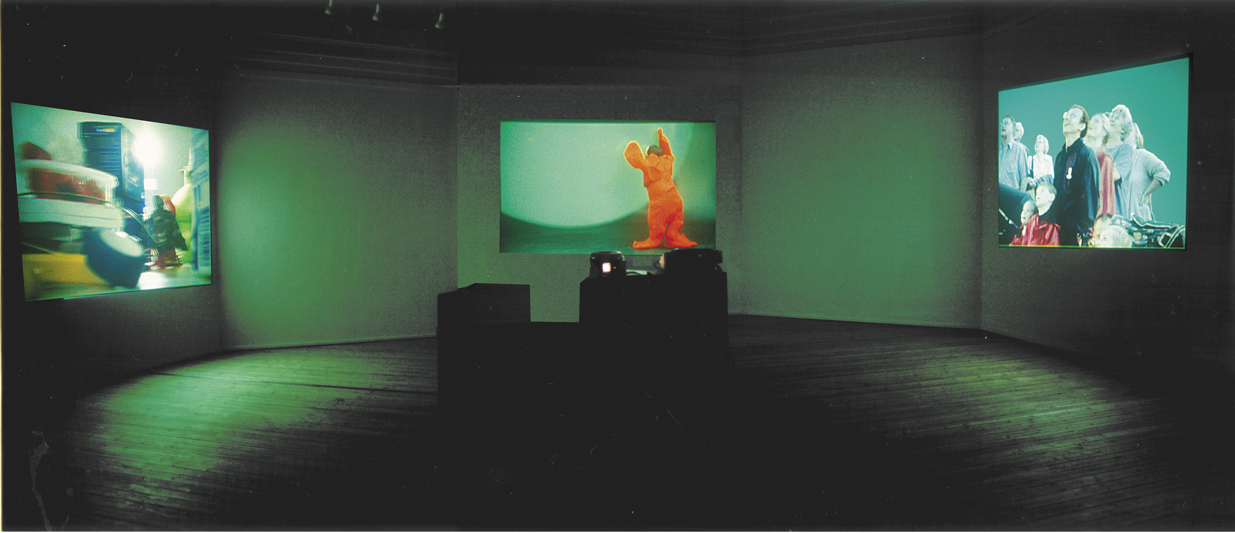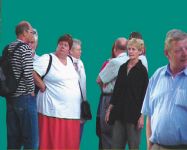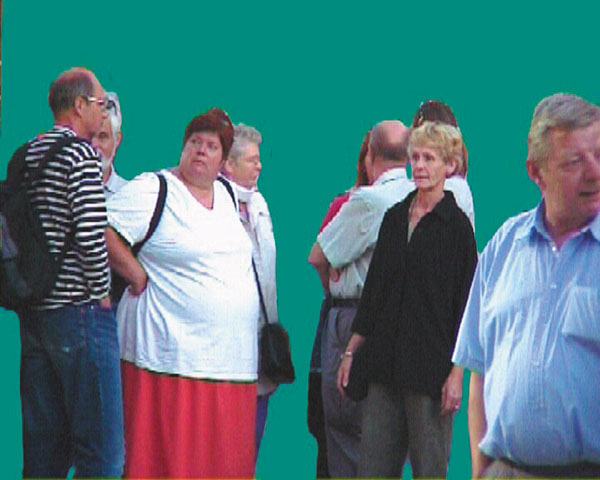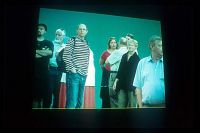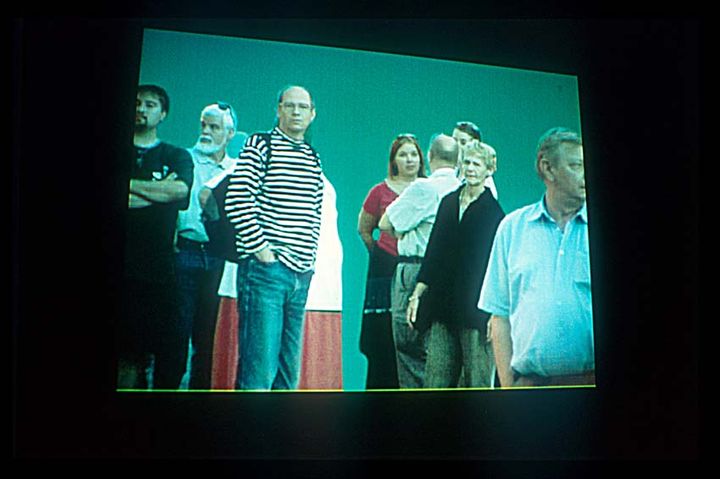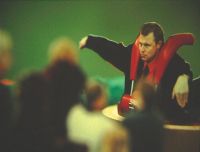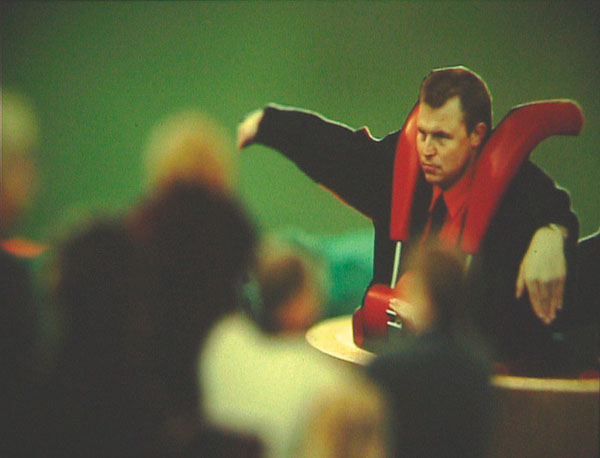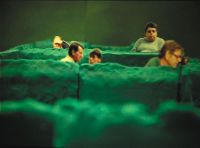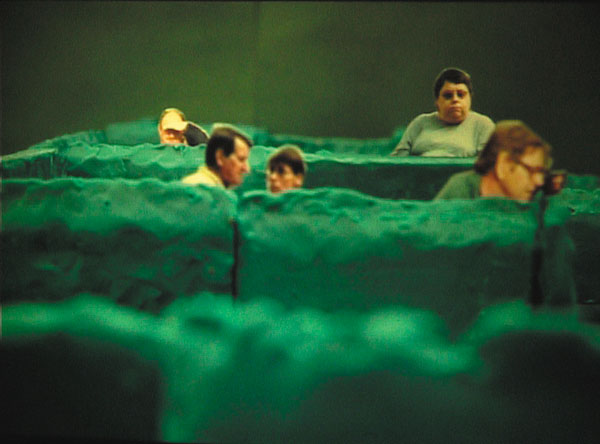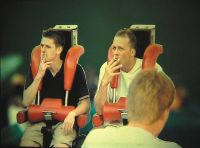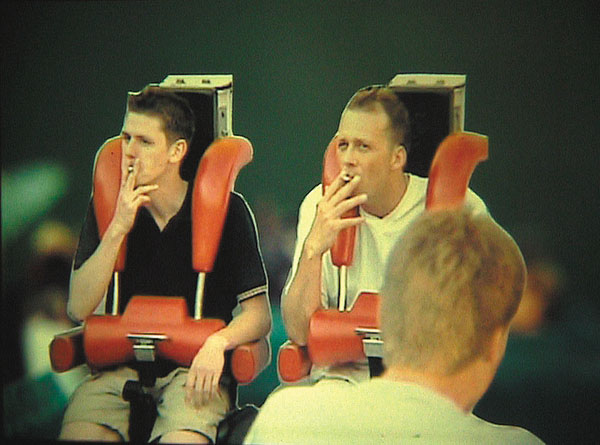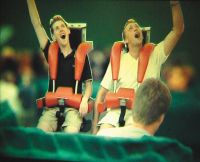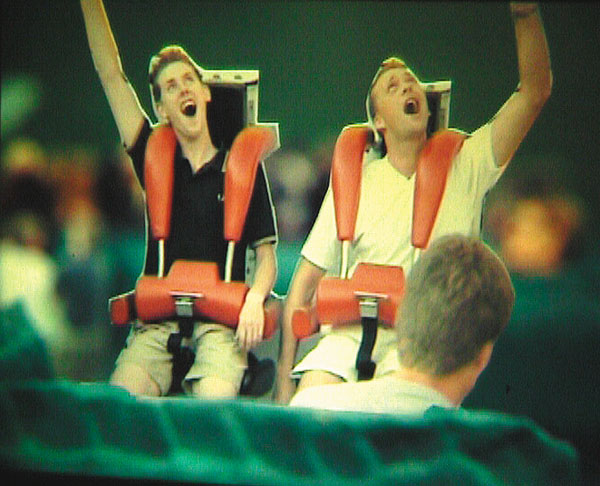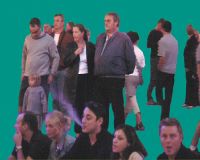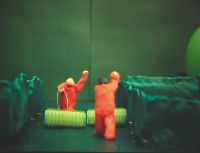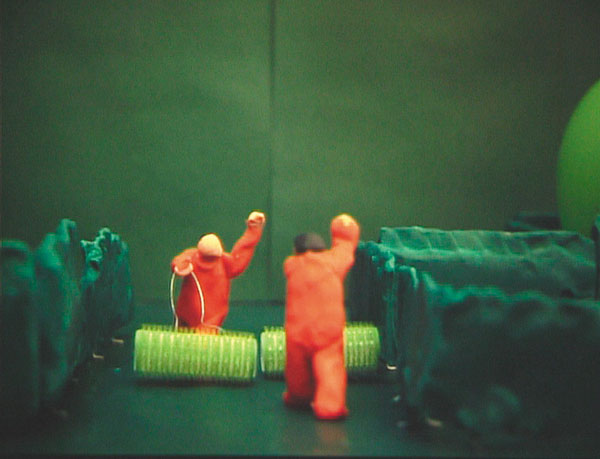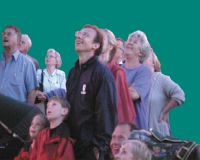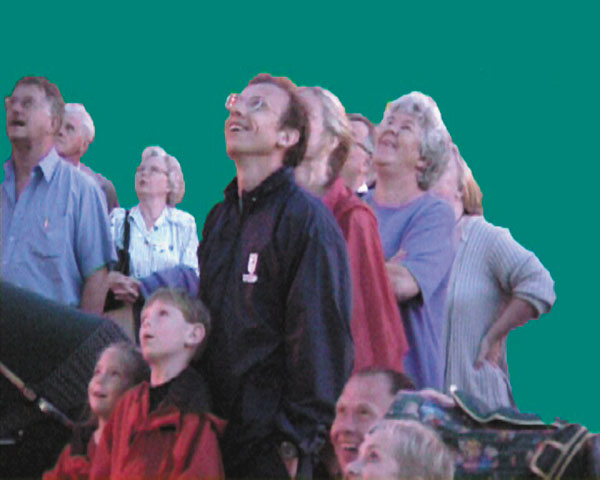"The Three Graces Dream of the Romantic Landscape" (2002)
Exhibition:
"The chosen ones", Århus Art Building, Århus, DK, 2002
For the exhibition 6 art critics were chosen to select six artists.Chosen critics:Kristine Kern, Torben Weirup,Ulla Strømberg, Trine Rytter Andersen, Jurunn Veiteberg, Bent Irve. Chosen artists: Marianne Grønnow,gay Christensen, Adam Saks, Kim Buck, Christian Winther, Kirsten Otzen Keck.
The three parts of the installation have been shown at other venues and in various constellations.The slides series was shown at the Spring Exhibit, Charlottenborg Art Hall, Copenhagen, DK, 2001.
The art work:
Animation / slides / rotoscope video- installation
Dur: 08:00 min./ loop / no sound. "The Three Graces Dream of the Romantic Landscape" consists of three computer synchronized sequences, projected onto three walls in Rotunden in Århus Art Building.The three video sequences refer to each other, and the content in them is meticulously synchronized frame by frame. Rotunden is an impressive large space, which is almost circular of shape- it has 8 corners, and has 8 metres to the ceiling.And by its shape and size can bear similarities to sacral spaces.
The piece deals with religion, entertainment and art, as realms in which a viewer can transcend into a different mental state from the everyday rational state of mind.It is also about spontaneously formed groups of individuals and an informal performer/ audience relationship in public space.
synopsis:In a card board model space, an environment resembling a municipal park, suburban garden hedges and the amusement park, little red plasticine men do the gardening. Photographic cut out-people appear behind the hedges and gather around the entertainment scene, that is being set up.
At the same time as this happens in the slides and video tracks,a red plasticine figure appears in the animation. He walks his dog, but he also resembles a lonely wanderer from a romantic painting. When reaching the very edge of the model space, he looks around into a landscape consisting of the tools lying around on the work table, mountain- like, lamps as big as the sun, and burning, and a gigantic clock ticking away.
In the rotoscoped video track people are watching and waiting for things to happen at the amusement attraction called "Double Shot". The groups of viewers in front of Double shot gather unstructured and spontaneously.Some groups may be made up of family members others of strangers.They wait around for something to happen, looking bored and restless, and eventually, when Double Shot starts, focused and oblivious to the surroundings and themselves.
The slides show photographic cut outs of people trying out "Double Shot". Their faces express horror and fun simultaneously, and some of them put on a show.
Time differs in the scenes.Time is moving fast or slow, according to the emotional state and perception of the characters. When working with animation and rotoscoping frame by frame, time also becomes flexible.It takes months to rotoscope back ground for a few seconds. The looping of sequences, the use of slow motion or scenes in which the arms of a clock speed up, due to the stills taken to create the animation, all show time in altered stages.
The piece is therefore also about the way the photograph, the still image, still image sequences in animation and video, rotoscoping, slow motion and other editing tricks, can tell about different perceptions of time and the way the mind is lending itself to experience a sense of presence.

